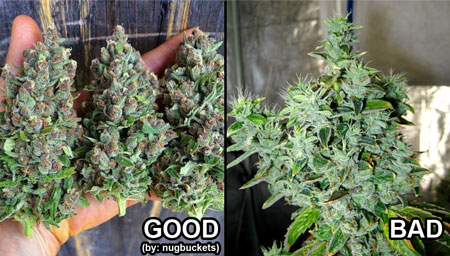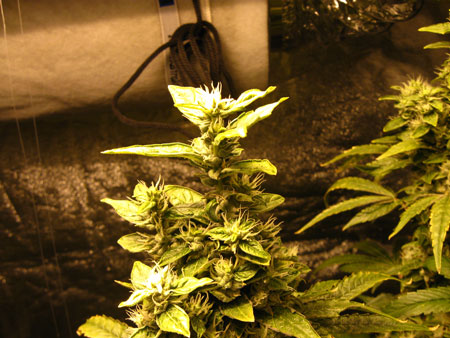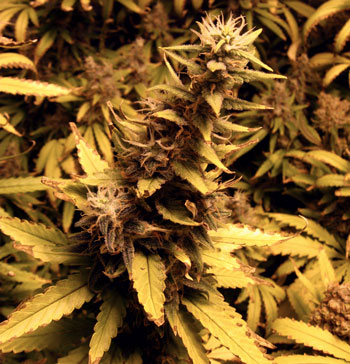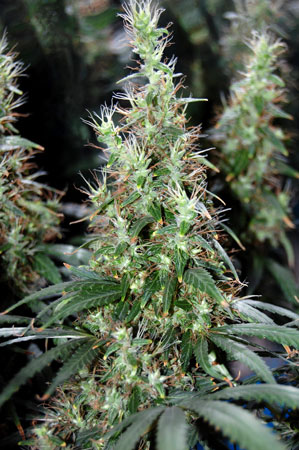-
Good learnin process. Once you get everything dialed in, you will get better results. What you're seein now is a plant tryin to recover from stress, in flower, and actually it's not doin too bad. The "bolting" you see is called "fox tailing, and it has several causes, mainly stress and heat related. Here's a good read for ya .
(Good vs Bad)
Before we go any further, I have to admit that designating one type of foxtailing ‘good’ is a bit misleading. I call it ‘good’ in that it doesn’t provide any positive or negative benefits; ‘good’ foxtailing looks a bit funky but ultimately, it’s purely a cosmetic issue. However, ‘bad foxtailing’ really is a bad thing and comes with consequences…
Being able to tell if the foxtailing you’re experiencing is good or bad is as simple as being able to tell the difference between two foxtailing pictures. Here are two more examples side-by-side:
Let’s start with the one on the left. This type of foxtailing is caused by…
Genetics
Some strains of cannabis have been bred – by humans and/or mother nature – to form buds where foxtailing is the norm. Although often foxtailing is caused by heat or light stress, when you’re growing a strain that is genetically predisposed to foxtail, the whole bud joins in on the foxtailing action. This makes it so that genetic foxtailing looks more uniform than the other type of foxtailing we’ll review in a minute.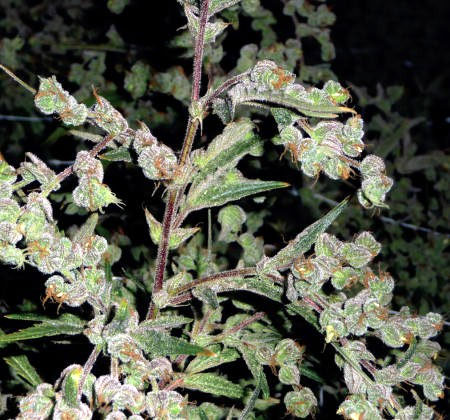
The picture to the right is a strain called ‘Dr. Grinspoon’ (named for the esteemed cannabis activist, Dr. Lester Grinspoon). The look of this plant could be considered another manifestation of genetic foxtailing, and it’s important to note that this action happens everywhere on the plant.
Good or Bad? In short, there’s nothing wrong with genetic foxtailing. The fact that it’s genetic means that it was going to do it regardless of whatever specific growing technique is being used. These strains are also capable of containing high amounts of THC, so it doesn’t seem that genetic foxtailing reduces the potency of the plant.
This type of foxtailing is the good type. Again, that only means that it’s good by comparison to bad foxtailing in that it doesn’t cause any negative effects.
Now for the other picture. The other kind of foxtailing (the bad kind) is usually caused by…
Heat/Light Stress
The second cause of foxtailing is environmental and it’s usually caused by your lights. If you’ve ever parked a high-powered HPS or LED light (CFLs and T5s aren’t usually strong enough) too close to your cannabis, you might see it grow these odd spires.What about when buds keep growing new white pistils over and over? This is another version of foxtailing that is caused by heat and light stress. If it’s only happening to the parts of the plant closest to the light, that’s a sign that it’s being caused by stress instead of genetics.
Good or Bad? Bad! This type of foxtailing is a sign that your buds are getting too much light and/or too much heat! These odd spires can also be accompanied by light bleaching and cooked leaves. Any one of these signs is a message that your lights need to be backed off immediately to halt any further damage. Although light bleaching and burned leaves are obviously damaged, foxtails don’t look damaged so much as they just look weird, so they don’t register as a threat to new growers. Unfortunately, they’re the harbingers of heat damage which means lost potency; if you see this type of foxtails on your buds, you’ve likely already lost potency to heat and now the mission is to lose as little as you possibly can.
Luckily, this type of foxtailing is usually localized, so you’ll only see it in spots where light intensity is super-high. This usually means they’ll be found in a small circle directly under the light, but that small circle gets larger as the light gets closer.
Now with all that being said, plants are weird! It’s totally possible that many of you growers have already seen a plant that makes the ‘bad’ looking foxtails but all over the plant. Or maybe a plant that only grows in spires! The point is that there is bound to be plants that break these rules, but at least until then you’ll know what you’re dealing with. Good luck and happy growing!
0 0 0 0 0 0 0-
From my experience inadequate lighting will just cause popcorn buds you’ll be able to see through.
4 1 0 1 0 0 0 -
-
No problem man but cubby’s correct on the genetics being part of what causes foxtailing, sativa strains are renowned for it, that’s what the environment from we’re they originated from adapted them to be like & I think jacks like an 80 or 90% Sativa.
0 0 1 0 0 0 0
Comment to Jock Horror a.f. 8.5 weeks of flower
